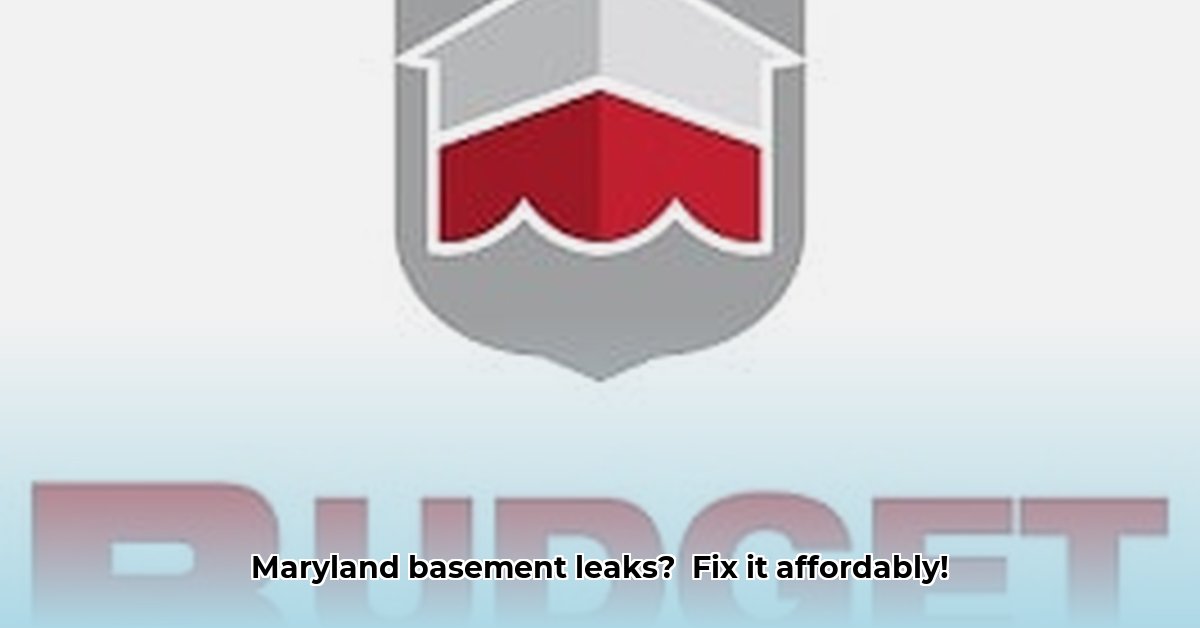
Budget Waterproofing in Maryland: Smart Solutions for a Dry Basement
Maryland's humid climate and older homes often lead to frustrating basement water problems. Dampness, musty odors, and even significant leaks are common challenges for homeowners. But don't despair! Effective waterproofing doesn't require breaking the bank. This guide provides practical strategies and actionable advice for keeping your Maryland basement dry and healthy without emptying your wallet.
Understanding Your Basement's Water Issues
Before tackling solutions, accurately assess the extent of the problem. Is it a minor drip, a persistent leak, or widespread dampness? Note the location(s) of the water intrusion, the severity, and any visible cracks or structural damage. Photographs and detailed notes will be invaluable when discussing the issue with contractors. This crucial first step helps determine the appropriate solutions and associated costs.
Effective Waterproofing Strategies: A Budget-Conscious Approach
Several methods address basement water issues, each with varying costs and effectiveness. Choosing the right approach depends on your specific circumstances and budget.
Interior Waterproofing: This involves applying waterproof coatings or membranes directly to basement walls. It's less disruptive than exterior methods, making it a potentially affordable option for smaller problems. Think of it as giving your walls a super-strong, waterproof barrier.
Exterior Waterproofing: A more involved process requiring excavation around the foundation to apply waterproofing materials. While more expensive initially, it provides more comprehensive, long-term protection. It's like giving your entire foundation a waterproof suit.
Crack Repair: Addressing cracks in your foundation is vital, regardless of other methods. Small cracks can be fixed with epoxy injections or hydraulic cement—relatively inexpensive and effective. Larger cracks may need more extensive repair.
Sump Pumps: These pumps remove accumulated water, preventing it from becoming a problem. Installing a sump pump is a proactive measure safeguarding against future water damage. Installing a backup system provides extra protection.
Cost Considerations: A Realistic Overview
Providing exact pricing is impossible without a site assessment. However, here's a general cost range for Maryland basement waterproofing projects:
| Method | Cost Range (Estimate) | Pros | Cons |
|---|---|---|---|
| Interior Waterproofing | \$1,000 - \$5,000 | Less disruptive; cost-effective for smaller issues. | May not address deeper foundation problems. |
| Exterior Waterproofing | \$5,000 - \$20,000+ | Comprehensive protection; longer lifespan. | Significantly more expensive and disruptive; requires excavation. |
| Crack Repair | \$100 - \$1,000+ per crack | Addresses specific weaknesses; can be a very cost-effective fix. | Doesn't solve broader water intrusion; it's a patch, not a cure-all. |
| Sump Pump Installation | \$500 - \$2,000 | Prevents flooding; safety net against unexpected water accumulation. | Requires regular maintenance and a reliable power supply. |
Remember, these are estimates. The final cost depends on basement size, problem severity, chosen materials, and contractor rates.
Selecting a Reputable Contractor: Your Partner in a Dry Basement
Don't rush into hiring a contractor! Thoroughly vetting potential professionals is crucial for a successful and budget-friendly project.
Verify Licensing and Insurance: Ensure they're legally operating and insured, protecting you in case of accidents or disputes.
Check Reviews: Investigate online reviews on sites like Angie's List, the Better Business Bureau (BBB), and Google Reviews. Look for consistent positive feedback and address any negative reviews.
Obtain Multiple Quotes: Compare quotes from at least three contractors, ensuring they're based on the same scope of work for fair comparison.
Request References: Speak with previous clients to gauge their experience and the contractor’s reliability.
Establish Clear Payment Terms: Discuss payment schedules and methods upfront; ensure everything is documented in writing.
Understand Warranties: Inquire about warranties covering both materials and workmanship.
DIY vs. Professional Waterproofing: Weighing the Options
While DIY might save money initially, tackling basement waterproofing without experience and proper equipment can worsen the problem and lead to more extensive, costly repairs. Professionals possess the expertise, tools, and knowledge for safe, efficient work.
DIY Waterproofing:
- Pros: Potential cost savings (if done correctly).
- Cons: High risk of causing more damage, potential safety hazards, lack of expertise, voiding warranties.
Professional Waterproofing:
- Pros: Expertise, proper equipment, warranty coverage, reduced risk of future problems.
- Cons: Higher initial cost.
Long-Term Basement Maintenance: Preventing Future Problems
Proactive maintenance is key to extending the lifespan of your waterproofing and preventing costly repairs.
Regular Inspections: Regularly check your basement for signs of moisture, cracks, or leaks. Early detection is crucial.
Clean Gutters: Clogged gutters lead to water overflow and potential basement seepage.
Address Minor Leaks Immediately: Don't ignore small leaks; they can escalate into major issues.
Investing in preventative maintenance significantly contributes to a dry, healthy, and valuable basement!